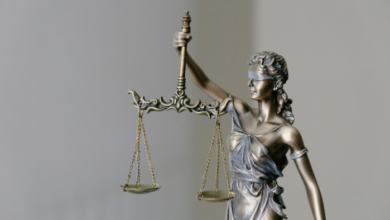2017cotd3838 Case Law: What You Need To Know

Introduction to 2017cotd3838 case law
The 2017cotd3838 case law has emerged as a significant milestone in the legal landscape. It’s more than just a series of court decisions; it’s a reflection of how evolving interpretations shape our understanding of justice and rights. This case not only captivated the legal community but also sparked discussions across various sectors, shedding light on crucial principles that govern our society.
As we dive into this complex narrative, we’ll explore its background, key players involved, and how their arguments contributed to the final ruling. The implications are vast—far beyond what some might assume at first glance. Whether you’re a legal professional or simply intrigued by current events, understanding the nuances of this case is essential for grasping its broader impact on future legal proceedings. Let’s unravel what makes 2017cotd3838 so pivotal in today’s world.
Background and history of the case
The 2017cotd3838 case emerged from a complex web of circumstances that brought it to the forefront of legal discussions. It began with an incident involving two parties locked in a dispute over contractual obligations.
As details unfolded, questions arose about compliance and accountability. The initial claims were rooted in allegations of negligence and failure to meet industry standards.
Over time, the case attracted significant attention due to its implications for similar disputes nationwide. Legal scholars observed closely as arguments took shape, revealing deeper issues regarding regulatory practices.
This backdrop set the stage for what would become a landmark decision, influencing not just those directly involved but also shaping future interpretations of law within this context. Each twist and turn added layers to its complexity, showcasing how seemingly isolated events can ripple through legal systems.
Key players and their arguments in the case
The 2017cotd3838 case featured several key players, each presenting compelling arguments that shaped the outcome. The plaintiff argued that their rights had been infringed upon, emphasizing the need for protection under existing laws.
On the opposing side, the defendant contended that their actions were justified and within legal boundaries. They highlighted precedents from previous cases to support this stance, asserting that no wrongdoing occurred.
Expert witnesses contributed additional perspectives on both sides. Their testimonies aimed to clarify complex issues surrounding legal interpretations and potential implications of the court’s ruling.
Public opinion played a role too, with various advocacy groups weighing in on what they believed was at stake. This added another layer of complexity as emotional appeals intersected with legal reasoning throughout the proceedings.
Court’s decision and reasoning behind it
The court’s decision in the 2017cotd3838 case was a pivotal moment. It set a clear precedent that resonated beyond this particular legal scenario.
Judges carefully examined all presented evidence. They weighed arguments from both sides with meticulous attention to detail. This thorough analysis contributed to their final ruling, which favored one party over the other.
Key elements of the reasoning involved interpretations of existing law and its application to modern circumstances. The judges highlighted inconsistencies in prior rulings, advocating for clarity and coherence within legal frameworks.
Furthermore, they acknowledged potential implications for future cases, stressing the importance of fairness and justice as guiding principles. Their detailed opinion underscored not just a resolution but an evolution in understanding how similar cases might be judged moving forward.
Impact of the case on current and future legal proceedings
The 2017cotd3838 case law has set a significant precedent for similar legal matters. Its implications are not just limited to the parties involved; they resonate throughout the judicial system.
Lawyers and judges now frequently reference this case when tackling related issues. The court’s reasoning offers a framework for understanding complex legal principles, guiding future interpretations.
Moreover, this ruling encourages more transparency in legal proceedings. It underscores the importance of thorough documentation and clear communication among stakeholders.
Future cases may also see an increase in appeals based on arguments drawn from this landmark decision. Legal practitioners will likely explore its nuances as they navigate their own cases.
Public awareness surrounding the case has sparked discussions about reform in certain areas of law. The ripple effects will continue to shape how justice is administered going forward.
Criticisms and controversies surrounding the case
The 2017cotd3838 case law has sparked significant debate among legal experts and the public alike. Critics argue that the court’s decision lacked sufficient clarity, leaving room for varied interpretations in future cases.
Some contend that the ruling may inadvertently set a dangerous precedent. This concern is particularly pronounced among advocates who fear it could undermine established rights in similar contexts.
Moreover, dissenting opinions highlight potential biases within the judicial process. Allegations of unequal representation raised questions about whether all parties had an equal opportunity to present their arguments effectively.
Public sentiment also plays a role in shaping perceptions of this case. Many feel disconnected from complex legal jargon, making it challenging to grasp its full implications without expert guidance.
These criticisms underscore ongoing tensions within the legal community regarding fairness and transparency in judicial proceedings related to the 2017cotd3838 case law.
Lessons learned from 2017cotd3838 case law
The 2017cotd3838 case law offers several vital lessons for legal practitioners and the public alike.
First, it emphasizes the importance of thorough preparation in presenting arguments. Every detail matters when influencing a court’s decision.
Second, this case highlights how crucial it is to understand precedent. The judges relied heavily on previous rulings to guide their reasoning.
Moreover, communication between parties can make a significant difference. Transparency often leads to more favorable outcomes and can even avert lengthy litigation.
The case serves as a reminder about evolving interpretations of law. Legal frameworks are not static; they adapt over time based on societal changes and judicial perspectives.




